Silver color birds are one of the most fascinating and striking bird species on the planet. Their unique and shimmering plumage radiates a dazzling metallic sheen, making them distinctive and instantly recognizable.
These birds epitomize elegance, grace, and beauty and are found in different parts of the world, including the Americas, Asia, Africa, and Australia.
Their gleaming silver feathers could serve a number of evolutionary purposes, ranging from display for mate attraction to camouflage from predators.
These magnificent birds have captured the attention of many bird enthusiasts and remain a wonder to behold.
1. Southern Silvery Kingfisher
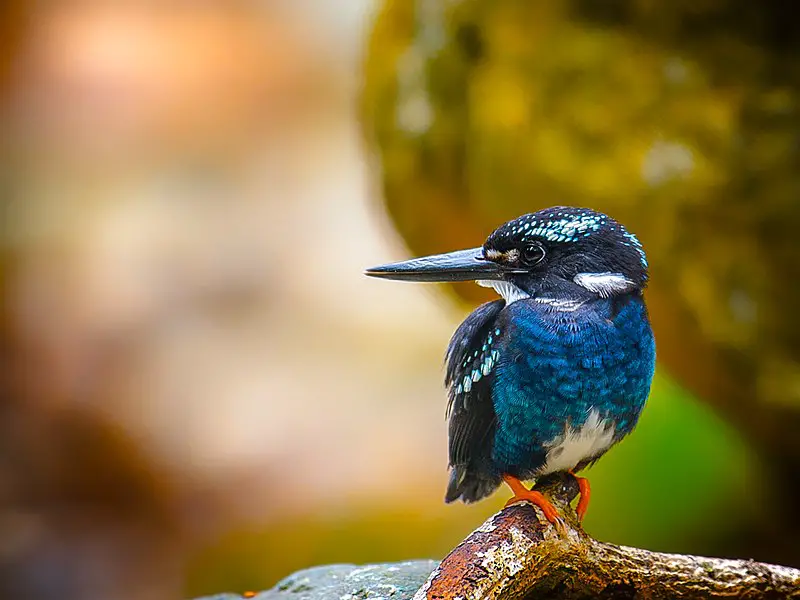
The Southern silvery kingfisher (Ceyx argentatus) is a species of bird that can only be found in the Philippines. It inhabits tropical moist lowland forests, streams and rivers located on Mindanao and Basilan Islands.
This stunning species was formerly considered to belong with the Northern silvery kingfisher from Visayas before being recognised as its own separate kind.
The beautiful blue-green colouring combined with white underparts make this tiny creature stand out among other birds of similar size.
Sadly, it is threatened due to habitat destruction which means conservation efforts are essential for its survival into the future.
Scientific classification:
| Kingdom | Animalia |
| Phylum | Chordata |
| Class | Aves |
| Order | Coraciiformes |
| Family | Alcedinidae |
| Subfamily | Alcedininae |
| Genus | Ceyx |
| Species | C. argentatus |
Also Featured In: Birds of the Philippines, Common Philippines Birds
2. Silver Pheasant
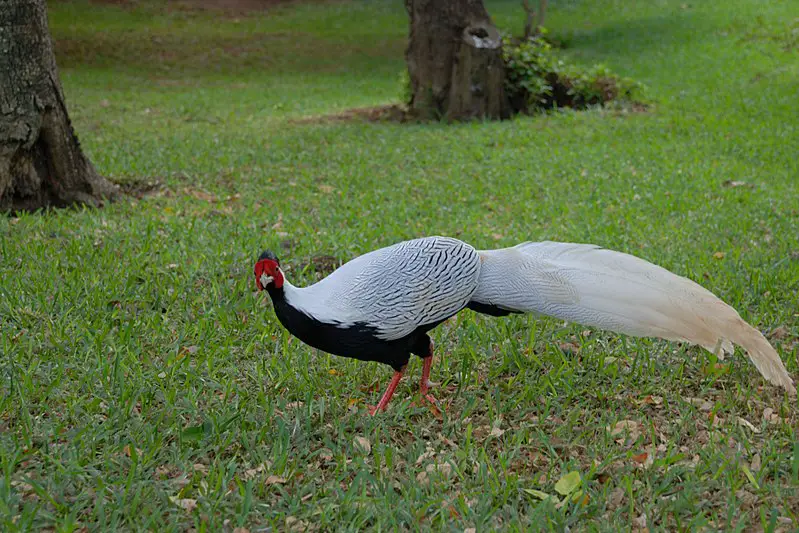
The Silver Pheasant is a stunningly beautiful bird native to parts of Southeast Asia, Eastern and Southern China. This species is known for its distinct black and white feathers in the males, while females are mainly brown.
They both have bare red faces and legs which sets them apart from other birds such as the Golden Pheasant.
The Silver pheasant lives mainly in mountain forests where it feeds on various types of insects, fruits, buds, shoots and seeds.
It has even been introduced to Argentina’s Victoria Island at Nahuel Huapi Lake.
These gorgeous creatures are also popular among aviculture enthusiasts who appreciate their majestic beauty – just be sure to provide plenty of space for these large birds if you hope to keep one as a pet.
Scientific classification:
| Kingdom | Animalia |
| Phylum | Chordata |
| Class | Aves |
| Order | Galliformes |
| Family | Phasianidae |
| Genus | Lophura |
| Species | L. nycthemera |
Also Featured In: Birds of Vietnam, Common Birds of Hainan
3. Silvery-Cheeked Hornbill
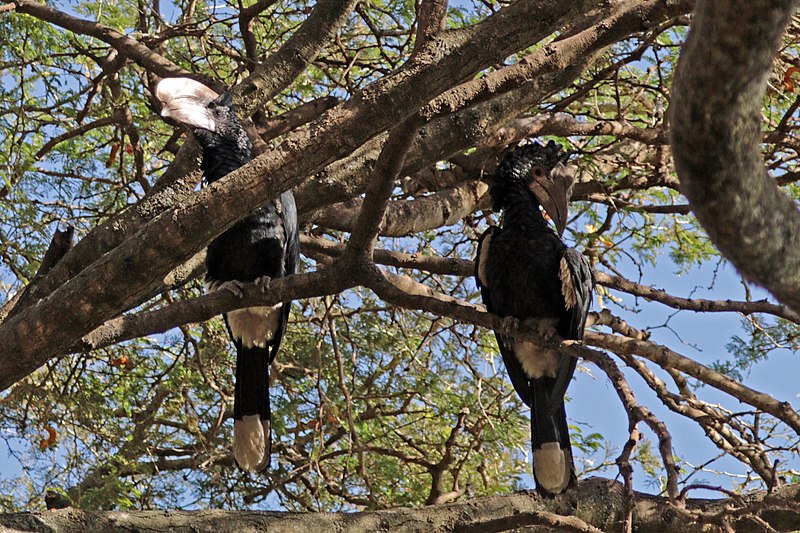
The silvery-cheeked hornbill is a beautiful species of bird native to East Africa. It stands out in its habitat due to its large size and striking features, including bright yellow eyes and white cheek patches on either side of the head.
This impressive creature can be found inhabiting tall evergreen forests from Ethiopia all the way down to South Africa.
Unfortunately, it’s becoming threatened as deforestation destroys more areas that are suitable for nesting sites.
Despite this threat, these birds remain fairly common throughout Zimbabwe and northern/central parts of South Africa – however their presence there is marginal at best.
We must work together now if we want future generations to have the chance appreciate these magnificent creatures.
Scientific classification:
| Kingdom | Animalia |
| Phylum | Chordata |
| Class | Aves |
| Order | Bucerotiformes |
| Family | Bucerotidae |
| Genus | Bycanistes |
| Species | B. brevis |
Also Featured In: Birds of Tanzania, East African Birds
4. Silver-Eared Honeyeater
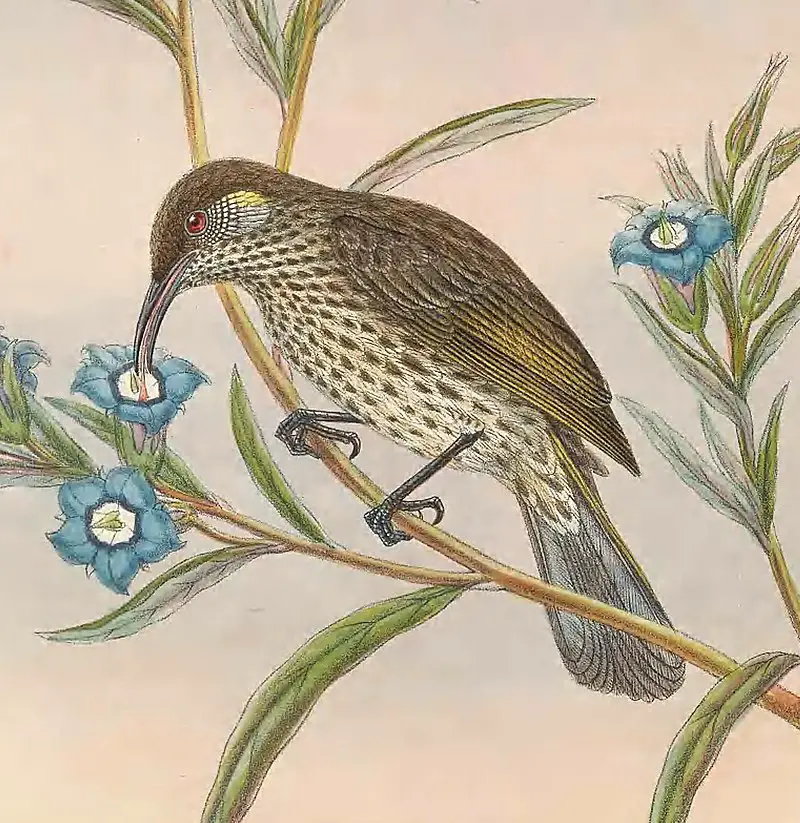
The Silver-eared honeyeater is a small bird native to New Guinea. It has distinctive white ear marks and mottled brown upperparts, as well as pale underparts with dark breast markings.
Its downcurved bill helps it feed on nectar from flowers or catch insects in the air.
This species makes its home in subtropical or tropical mangrove forests where it forages for food among tree branches and shrubs.
The Silver-eared honeyeater can be identified by its call which sounds like a series of musical notes that increase rapidly before ending abruptly.
As an important pollinator of forest plants, these birds are vital to their ecosystems’ health and vitality.
Scientific classification:
| Kingdom | Animalia |
| Phylum | Chordata |
| Class | Aves |
| Order | Passeriformes |
| Family | Meliphagidae |
| Genus | Lichmera |
| Species | L. alboauricularis |
Also Featured In: Papua New Guinea birds,
5. Indian Silverbill
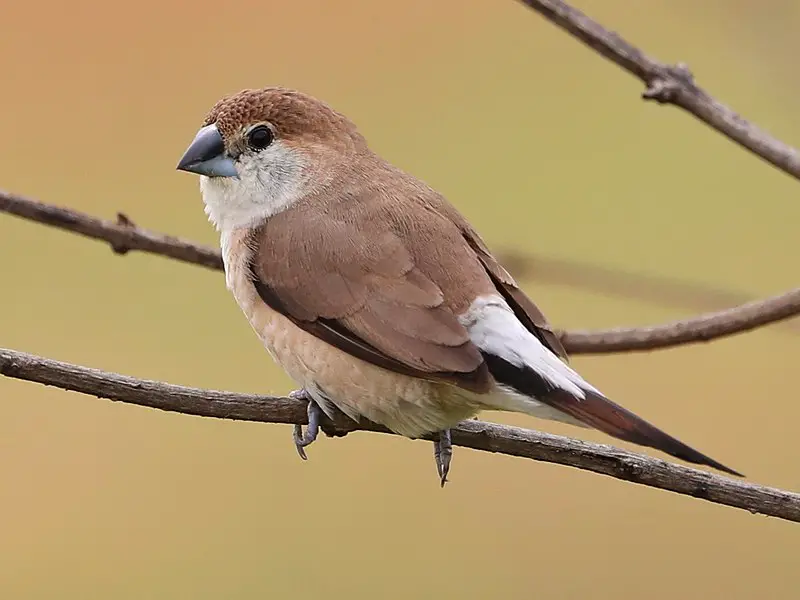
The Indian silverbill is a small passerine bird found in the Indian Subcontinent and adjoining regions.
It has grey upperparts, white underparts with black barring on its breast and abdomen, bluish-white wings and tail feathers; Males have bright red eyes while females have brownish eyes.
This estrildid finch species inhabits dry areas of the Middle East region as well as the subcontinent where it breeds commonly.
The diet of this species consists mainly of grass seeds supplemented by insects during breeding season.
Although they are not known to be migratory birds, they may flock together when food sources become scarce in their native range due to drought or other environmental conditions.
They can also now be found outside their natural range following introductions from humans for aviculture purposes.
Scientific classification:
| Kingdom | Animalia |
| Phylum | Chordata |
| Class | Aves |
| Order | Passeriformes |
| Family | Estrildidae |
| Genus | Euodice |
| Species | E. malabarica |
Also Featured In: Oman Birds, Common Birds that Live in Odisha
6. Silvereye
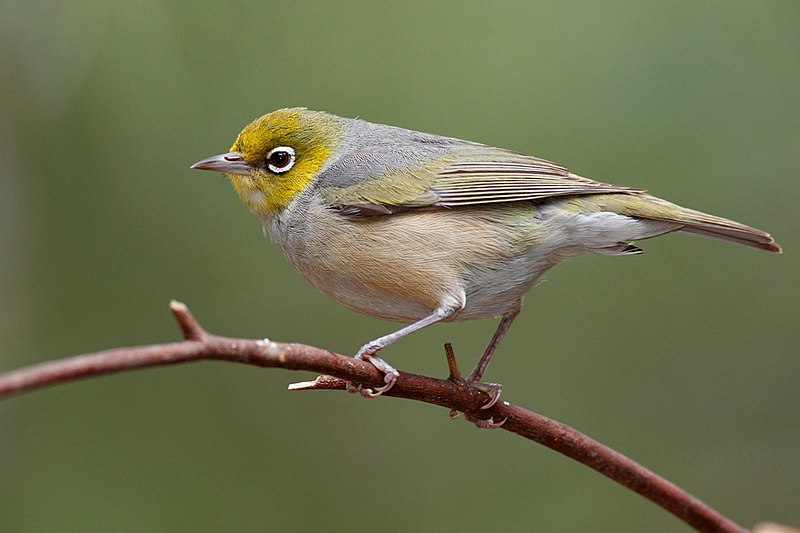
The silvereye, also known as wax-eye, is a tiny passerine bird native to the south-west Pacific region. It was first recorded in New Zealand in 1832 and there were greater numbers by 1856.
These birds are omnivorous feeders that make their home in open woodlands or gardens with lush vegetation.
Their plumage has greyish tones on top of its head and wings giving it a silver sheen look which inspired its common name ‘silvereye’.
The underside of these birds have white feathers allowing for camouflage among foliage when they fly low over shrubs and trees seeking food such as nectar, insects and fruit.
They are social creatures who often flock together to share meals while communicating through their unique chirps.
Scientific classification:
| Kingdom | Animalia |
| Phylum | Chordata |
| Class | Aves |
| Order | Passeriformes |
| Family | Zosteropidae |
| Genus | Zosterops |
| Species | Z. lateralis |
Also Featured In: New Zealand Birds, Birds that Live around Brisbane
7. Silver-Throated Tanager
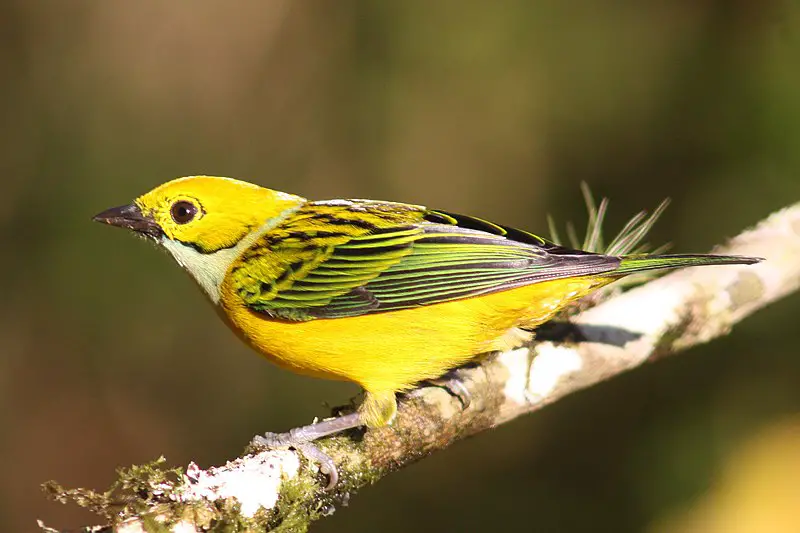
The magnificent silver-throated tanager is a species of passerine bird in the Thraupidae family.
It occupies parts of Costa Rica, Panama, Colombia, Ecuador and Peru where it prefers to live in mossy forests with tall secondary growth or disturbed habitats that still have some remnant trees.
Standing at an impressive 13 cm long this colourful creature has a beautiful mixture of blue feathers on its head and neck as well as yellowish green wings tipped with white.
Its underparts are grey while its tail is black fringed with olive-green highlights which adds to its striking appearance.
In addition they also sport bright red eyes which further enhance their beauty making them one of nature’s most exquisite birds.
Scientific classification:
| Kingdom | Animalia |
| Phylum | Chordata |
| Class | Aves |
| Order | Passeriformes |
| Family | Thraupidae |
| Genus | Tangara |
| Species | T. icterocephala |
Also Featured In: Panama Birds,
8. Silver-Capped Fruit Dove
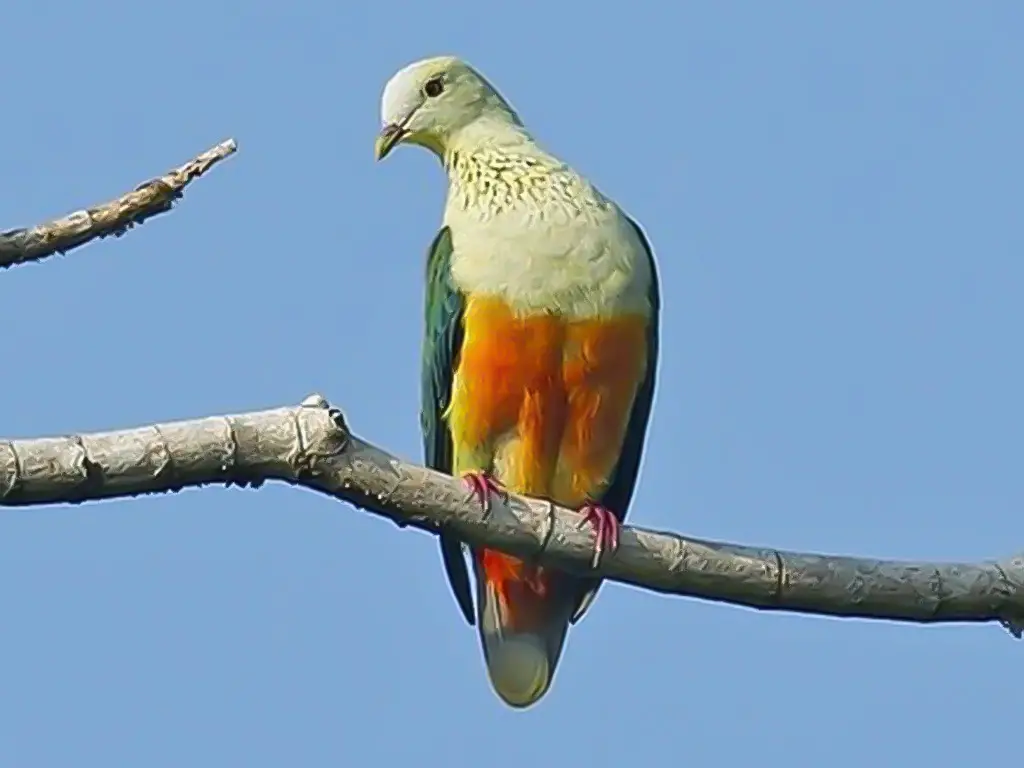
The silver-capped fruit dove is a species of bird that belongs to the family Columbidae. It can only be found in Solomon Islands and prefers subtropical or tropical moist lowland forests as its natural habitat.
This uniquely beautiful creature has distinctive characteristics, such as its light grey head with dark eyes, red iris and chestnut brown neck feathers; plus a green body with white spots on its wings.
The underside of this pretty bird is mostly yellowish orange, while their tail also has some hints of blue hues at times.
Furthermore, they have short legs which help them hop around searching for food like fruits and nuts from trees easily.
They are often seen alone or in small groups flying above the forest canopy looking out for potential meals – making them an interesting sight to behold.
Scientific classification:
| Kingdom | Animalia |
| Phylum | Chordata |
| Class | Aves |
| Order | Columbiformes |
| Family | Columbidae |
| Genus | Ptilinopus |
| Species | P. richardsii |
Also Featured In: Solomon Islands birds,
9. Silver-Beaked Tanager

The Silver-beaked Tanager is a medium sized passerine bird native to South America. It has an unmistakable deep crimson head and velvety black body, making it a colorful addition to any environment.
Its 18 cm length and 25g weight are typical of its family; they are usually found in pairs or small flocks near open areas with trees for perching.
The tanager’s diet consists mainly of fruit and insects, which can be caught by hawking from the air or gleaned from foliage on the ground.
This species breeds throughout most of tropical South America east of the Andes Mountains, including Venezuela, Colombia, Peru and Brazil all the way down to Paraguay as well as Trinidad island off northern coast.
With their bright colors and easy presence around human habitation these birds make excellent subjects for amateur photographers.
Scientific classification:
| Kingdom | Animalia |
| Phylum | Chordata |
| Class | Aves |
| Order | Passeriformes |
| Family | Thraupidae |
| Genus | Ramphocelus |
| Species | R. carbo |
Also Featured In: Suriname birds, Birds that Live in Guyana
10. Silver Gull

The Silver Gull is a common sight in Australia, especially along the coastlines. It’s smaller than the Pacific Gull and has silver-grey wings with white head and underparts.
Its scientific name is Chroicocephalus novaehollandiae, but it shouldn’t be confused with the Herring Gull which is also called “Silver Gull” in many other languages (Larus argentatus).
During summer months these birds can often be seen around fishing boats scavenging for discarded food or flying low over city parks looking for handouts from humans.
They are highly adaptable to their environment making them quite successful at coexisting near human populations.
These Australian seabirds have been known to live up to 25 years old.
Scientific classification:
| Kingdom | Animalia |
| Phylum | Chordata |
| Class | Aves |
| Order | Charadriiformes |
| Family | Laridae |
| Genus | Chroicocephalus |
| Species | C. novaehollandiae |
Also Featured In: Gulls Species, Birds that Live Near Adelaide
11. Silver Teal

The silver teal is a species of dabbling duck found in South America. It prefers to nest in reed beds between April and June, laying 6-10 creamy-pink eggs which both parents will take part in raising the young.
This small bird lives on freshwater lakes and ponds where it can be seen swimming around with its flock, feeding mainly on vegetation such as seeds and aquatic plants.
In flight they have distinctive white chest markings that stand out against their silvery brown body feathers making them easy to spot from afar.
Silver Teals are very sociable birds whose flocks may last for many years if not disturbed by predators or humans encroaching upon their environment.
Scientific classification:
| Kingdom | Animalia |
| Phylum | Chordata |
| Class | Aves |
| Order | Anseriformes |
| Family | Anatidae |
| Genus | Spatula |
| Species | S. versicolor |
Also Featured In: birds of teal, Falkland Islands Birds You Need To Know
12. Silvery Pigeon
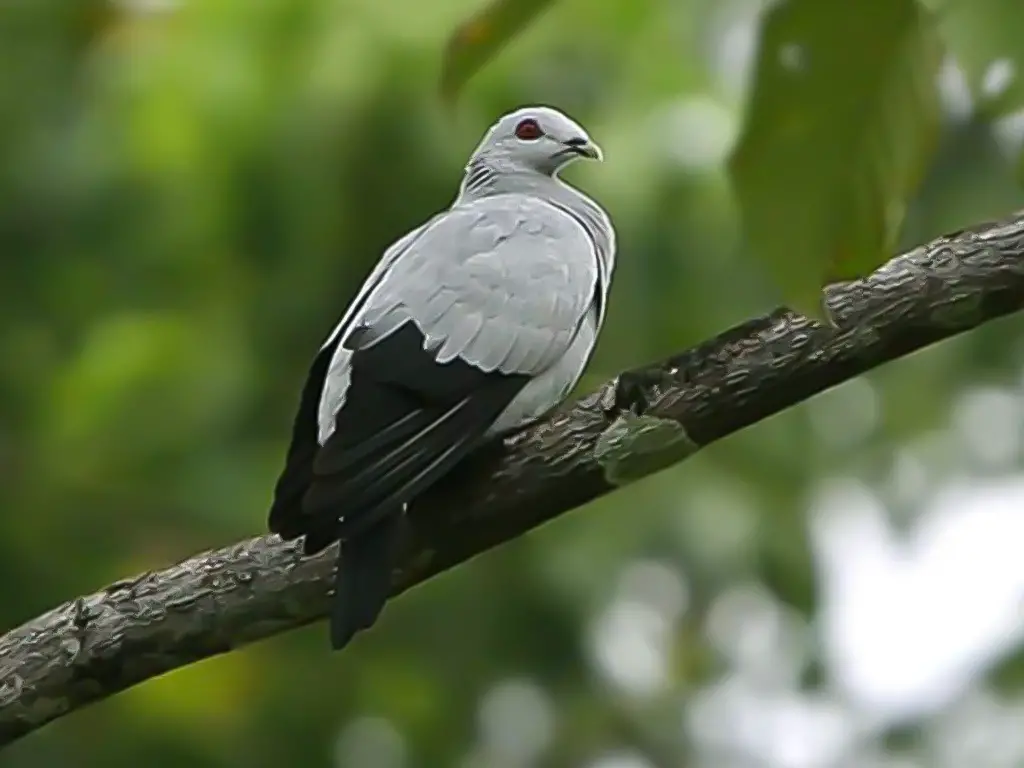
The Silvery Pigeon, also called the Grey Wood-Pigeon, is a bird species found in Indonesia and Malaysia.
This pigeon was previously believed to be extinct, but recent discoveries in Masokut Island suggest that it may still exist.
Pictures from Simeulue also confirm the existence of this bird species. The Silvery Pigeon is very similar in appearance to the Pied Imperial Pigeon and is difficult to distinguish.
Scientific classification:
| Kingdom | Animalia |
| Phylum | Chordata |
| Class | Aves |
| Order | Columbiformes |
| Family | Columbidae |
| Genus | Columba |
| Species | C. argentina |
Also Featured In: Birds that Live in Borneo Island, Birds that Found in Sumatra
13. African Silverbill
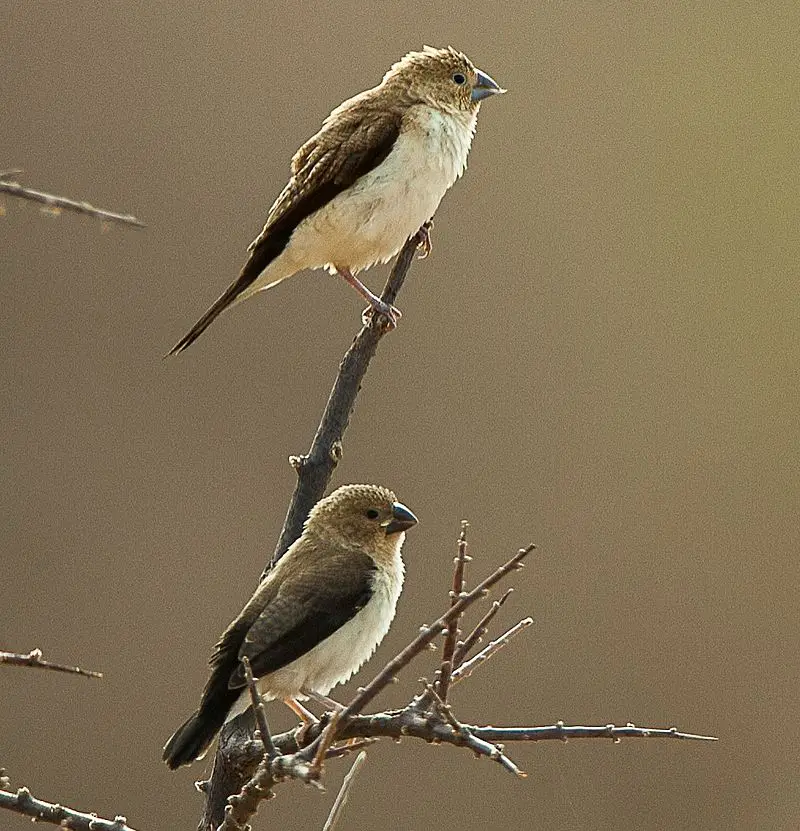
The African silverbill is a small passerine bird found in the dry savanna habitat south of the Sahara Desert. It was previously considered to be the same species as the Indian silverbill.
This bird is common in its native range and also introduced in other countries like Portugal, Qatar, and the United States.
Scientific classification:
| Kingdom | Animalia |
| Phylum | Chordata |
| Class | Aves |
| Order | Passeriformes |
| Family | Estrildidae |
| Genus | Euodice |
| Species | E. cantans |
14. Silvery-Throated Jay
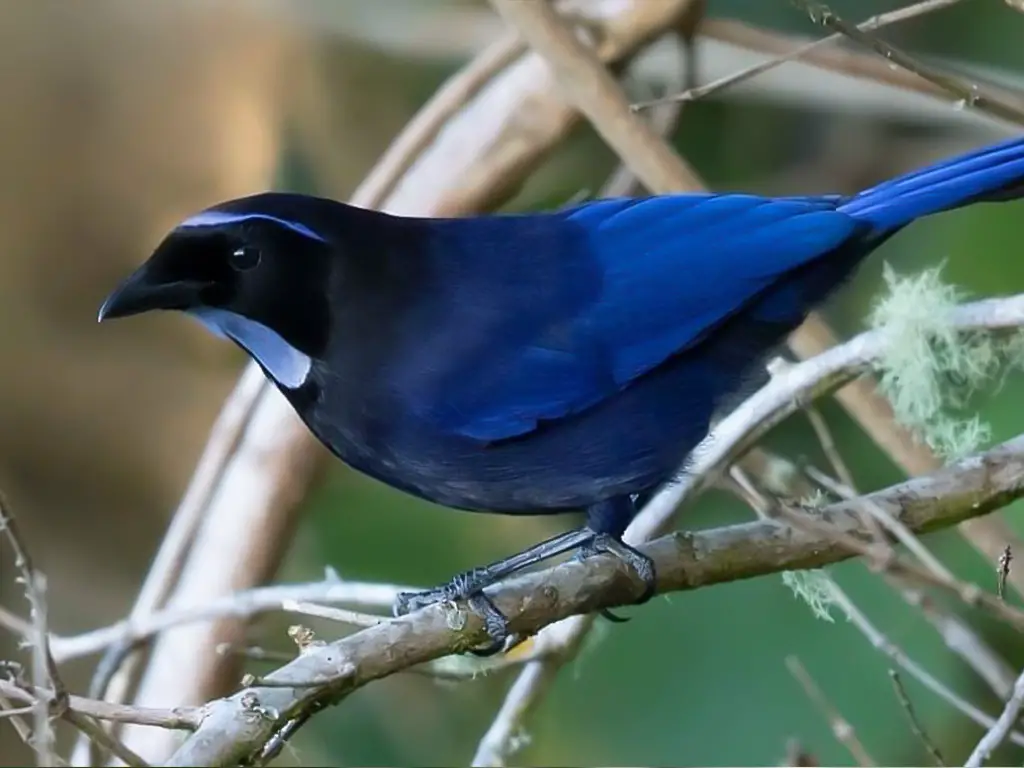
The Silvery-throated jay bird, also known as Cyanolyca argentigula, can be found in Costa Rica and western Panama. This species belongs to the family Corvidae and is considered to be of “least concern” in terms of conservation.
This small jay is easily distinguishable from other birds in the area due to its unique appearance. Both males and females look alike with their silvery throats and bright blue plumage.
Despite its beauty, there is not much information available about the behavior or habits of this bird.
Nonetheless, the Silvery-throated jay remains an important part of the ecosystem in which it inhabits, and it’s a sight to behold for birdwatchers and nature enthusiasts alike.
Scientific classification:
| Kingdom | Animalia |
| Phylum | Chordata |
| Class | Aves |
| Order | Passeriformes |
| Family | Corvidae |
| Genus | Cyanolyca |
| Species | C. argentigula |
15. Silver-Tipped Imperial Pigeon
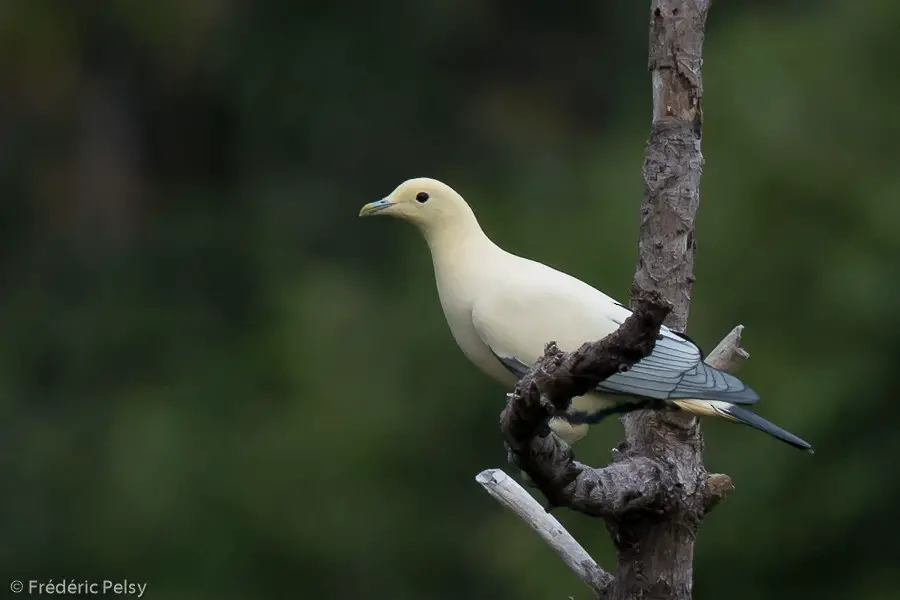
The Silver-tipped imperial pigeon is a large bird found on Sulawesi and nearby small islands in forests, woodlands, and mangroves.
It belongs to the family Columbidae and is also known as the White-tipped imperial-pigeon.
This bird has a yellowish tip on its bill, black spots near the vent, and cannot be considered a subspecies of the Pied imperial pigeon.
It is endemic to the region and has unique features that differentiate it from other pigeons in the area.
Overall, the Silver-tipped imperial pigeon is a fascinating bird for birdwatchers and avid nature lovers to observe in its natural habitat.
Scientific classification:
| Kingdom | Animalia |
| Phylum | Chordata |
| Class | Aves |
| Order | Columbiformes |
| Family | Columbidae |
| Genus | Ducula |
| Species | D. luctuosa |
16. Silver-Eared Mesia
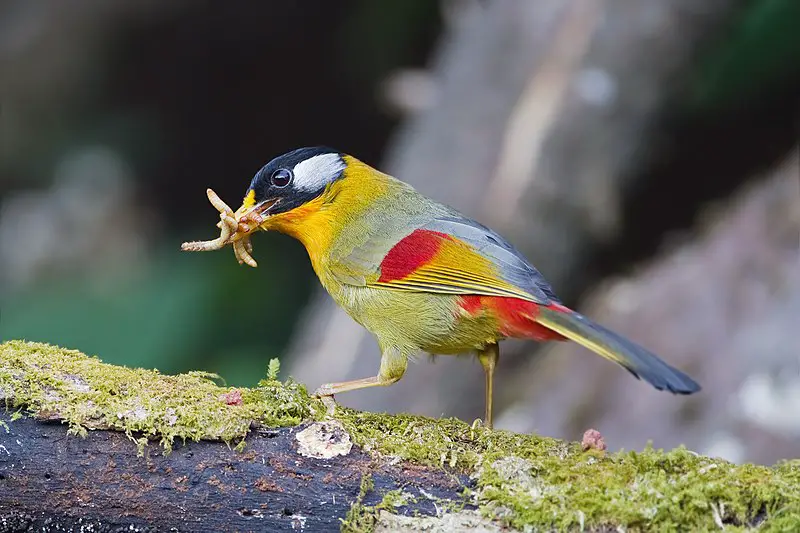
The Silver-eared Mesia bird is a species found in South East Asia. It was previously categorized under the Timaliidae family but has been reclassified as part of the Leiothrichidae family.
Some classify it under its own genus, Mesia, or with the red-billed leiothrix in the Leiothrix genus.
The bird’s most notable feature is its silver-colored ear coverts which contrast against its black and yellow-green plumage.
Its diet consists of insects, fruit, and nectar. The species is known for its lively and social behavior, often foraging in groups and communicating with a wide range of vocalizations.
Their population numbers are currently stable, and they can be found in various habitats, including forests, gardens, and parks.
The Silver-eared Mesia is a charming and unique bird that contributes to the rich biodiversity of its region.
Scientific classification:
| Kingdom | Animalia |
| Phylum | Chordata |
| Class | Aves |
| Order | Passeriformes |
| Family | Leiothrichidae |
| Genus | Leiothrix |
| Species | L. argentauris |
17. Silver Oriole
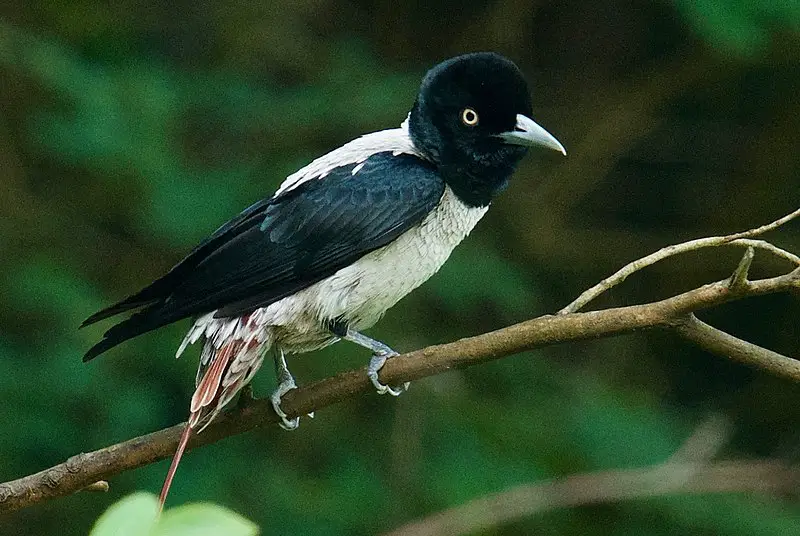
The Silver Oriole is a striking bird belonging to the Oriolidae family. This bird species breeds in the southern part of China and migrates to mainland Southeast Asia during winters.
It thrives in subtropical or tropical moist lowland and montane forests. These beautiful birds are threatened by habitat loss due to human activities.
The Silver Oriole was initially considered a subspecies of the Maroon Oriole, but it is now recognized as a distinct species.
With its vivid color and beautiful song, the Silver Oriole is a common sight for birdwatchers in China and Southeast Asia.
These birds play an essential role in maintaining the ecological balance and must be conserved for future generations.
Scientific classification:
| Kingdom | Animalia |
| Phylum | Chordata |
| Class | Aves |
| Order | Passeriformes |
| Family | Oriolidae |
| Genus | Oriolus |
| Species | O. mellianus |
18. Silver-Crowned Friarbird
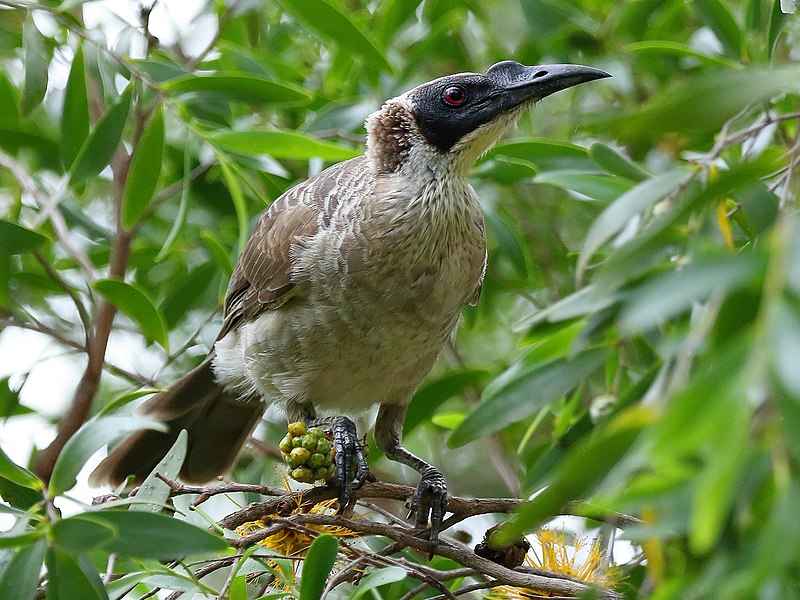
The silver-crowned friarbird, a unique species of bird, can only be found in northern regions of Australia. This bird, belonging to the family Meliphagidae, is adapted to subtropical and tropical dry forests along with mangrove forests.
Its grayish-green plumage is beautifully complemented with a silver crown, which makes it even more captivating to observe. This bird typically feeds on nectar and insects, using its long and curved beak to extract nutrients.
The silver-crowned friarbird’s lively and vocal nature makes it easy to spot, especially during courtship or territorial displays.
Even though it is a common sight in its habitats, it is essential to preserve its natural environment.
Otherwise, this stunning bird, like many others, may face significant challenges in finding the resources they need to survive.
Scientific classification:
| Kingdom | Animalia |
| Phylum | Chordata |
| Class | Aves |
| Order | Passeriformes |
| Family | Meliphagidae |
| Genus | Philemon |
| Species | P. argenticeps |
19. Silvery-Cheeked Antshrike
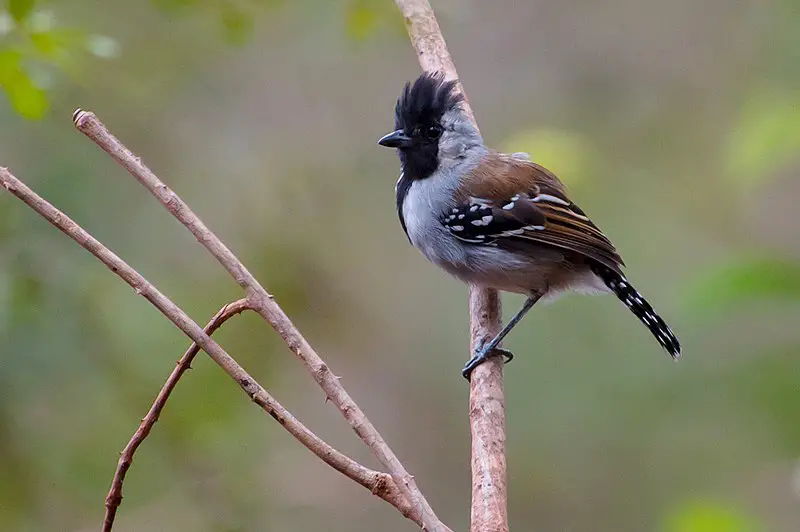
The Silvery-cheeked antshrike bird is a unique species of the Thamnophilidae family, also known as antbirds. With its distinctive silver cheeks, it is easily recognizable.
Previously classified under the genus Sakesphorus, it has now been placed into its own genus called Sakesphoroides based on new molecular evidence. This bird is the only member of its monotypic genus.
The Silvery-cheeked antshrike is found exclusively in its endemic regions. As of now, not much is known about this bird and further research is required to document its behavior and habits in the wild.
Scientific classification:
| Kingdom | Animalia |
| Phylum | Chordata |
| Class | Aves |
| Order | Passeriformes |
| Family | Thamnophilidae |
| Genus | Sakesphoroides Grantsau, 2010 |
| Species | S. cristatus |
20. Silvery-Fronted Tapaculo
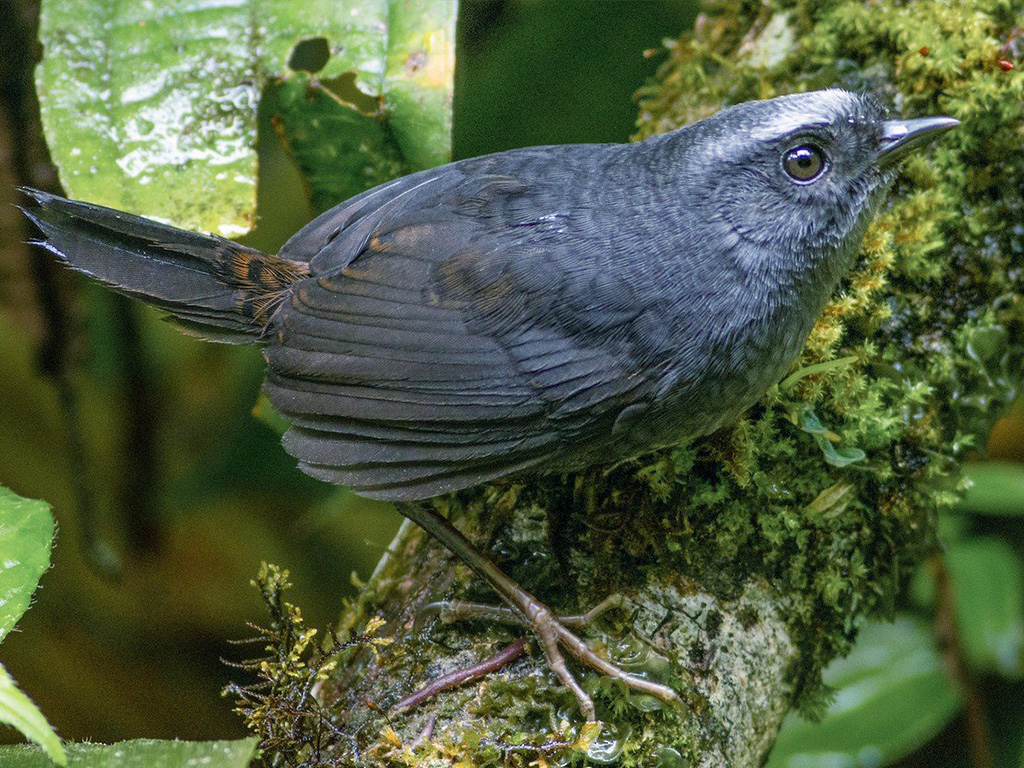
The Silvery-fronted tapaculo bird is a member of the Rhinocryptidae family and can be found in Costa Rica and Panama. It has two subspecies, the silvery-fronted and the Chiriqui.
The Chiriqui subspecies has been considered a separate species. The bird’s name comes from the silvery grey color of its head and front. It is a small bird known for its secretive behavior, often hiding in dense vegetation.
The Silvery-fronted tapaculo feeds on insects and other small invertebrates, and communicates through a variety of high-pitched songs and calls.
Sadly, the species is facing threats from habitat loss due to human development and deforestation in its native range.
Conservation efforts are needed to protect this unique and fascinating bird.
Scientific classification:
| Kingdom | Animalia |
| Phylum | Chordata |
| Class | Aves |
| Order | Passeriformes |
| Family | Rhinocryptidae |
| Genus | Scytalopus |
| Species | S. argentifrons |
21. Silvery-Throated Spinetail
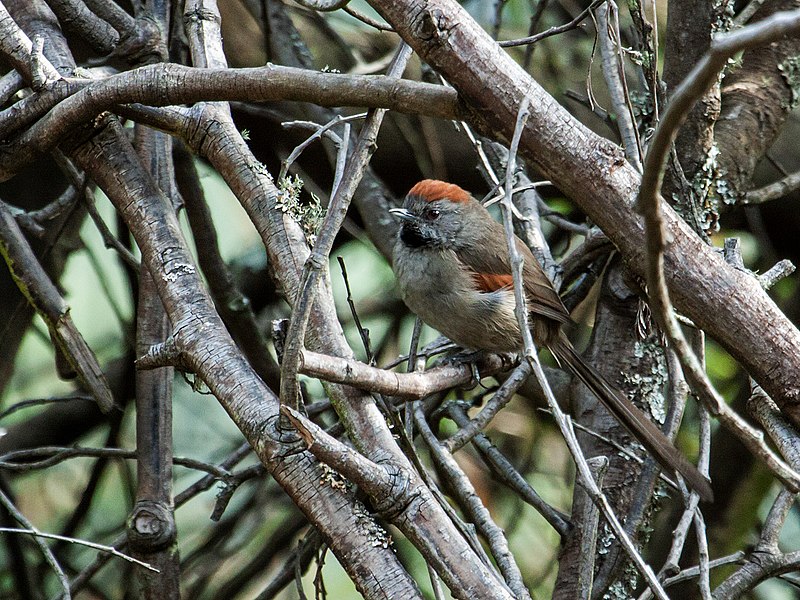
The Silvery-throated spinetail is a bird species that belongs to the Furnariidae family. They are found exclusively in Colombia and prefer subtropical or tropical moist montane forests.
Sadly, they frequent heavily degraded former forest areas. They have a striking appearance with a silver-colored throat, hence their name. These birds are not well-known and are seldom seen by humans.
They are yet another species that suffer from habitat loss due to deforestation, which is rapidly decreasing their population. It is essential to take action and protect these beautiful creatures and their natural habitats.
Scientific classification:
| Kingdom | Animalia |
| Phylum | Chordata |
| Class | Aves |
| Order | Passeriformes |
| Family | Furnariidae |
| Genus | Synallaxis |
| Species | S. subpudica |
22. Silver-Backed Tanager
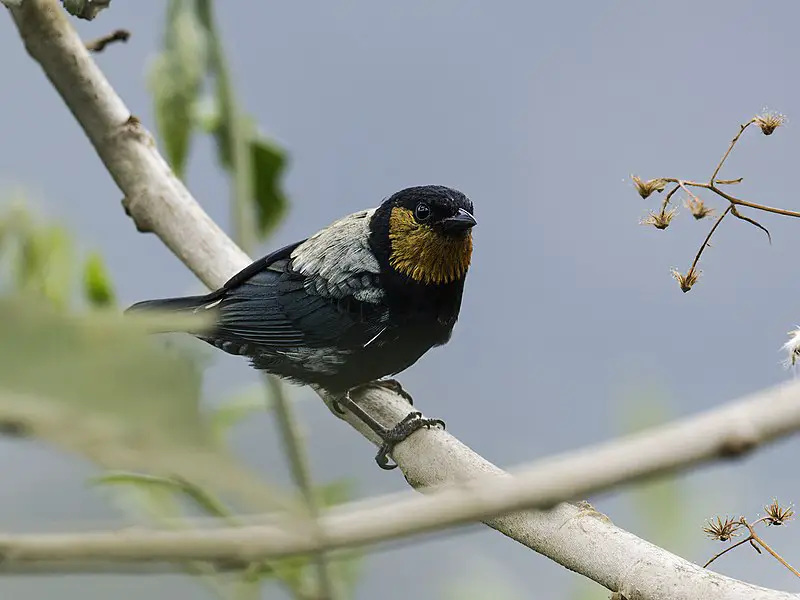
The silver-backed tanager is a stunning bird belonging to the tanager family. This species is commonly known as the silvery tanager due to the shimmering silver feathers adorning its back.
Humid highland forests in Ecuador, Peru, and Bolivia are the natural habitats for this bird. If you visit Machu Picchu, it’s highly likely that you’ll see this beautiful bird, which is often spotted in this area.
These birds are known for their colorful and vibrant personalities, and their melodious tweets add a pleasant aura to their surrounding environment.
Seeing this species in person is an experience that nature lovers won’t want to miss during their visit to South America.
Scientific classification:
| Kingdom | Animalia |
| Phylum | Chordata |
| Class | Aves |
| Order | Passeriformes |
| Family | Thraupidae |
| Genus | Stilpnia |
| Species | S. viridicollis |
23. Silvery Grebe

The Silvery Grebe is a freshwater bird found in the western and southern parts of South America. It can survive in altitudes of up to 4,000 metres and is even known to feed in saline lakes.
Measuring about 28 cm in length, this bird has two different subspecies with varying coloring on their heads.
The Silvery Grebe mainly feeds on small fish, crustaceans and aquatic vegetation.
Their natural habitat is freshwater lakes where they build their nests among aquatic plants. The Silvery Grebe has a unique appearance with a silvery-gray plumage and red eyes.
They are usually seen swimming on the surface of the water or diving to forage for food.
Their conservation status is currently listed as Least Concern.
Scientific classification:
| Kingdom | Animalia |
| Phylum | Chordata |
| Class | Aves |
| Order | Podicipediformes |
| Family | Podicipedidae |
| Genus | Podiceps |
| Species | P. occipitalis |
Also Featured In: Patagonia Birds You Should Know, Common Birds that Live around Ushuaia
24. Silverbird
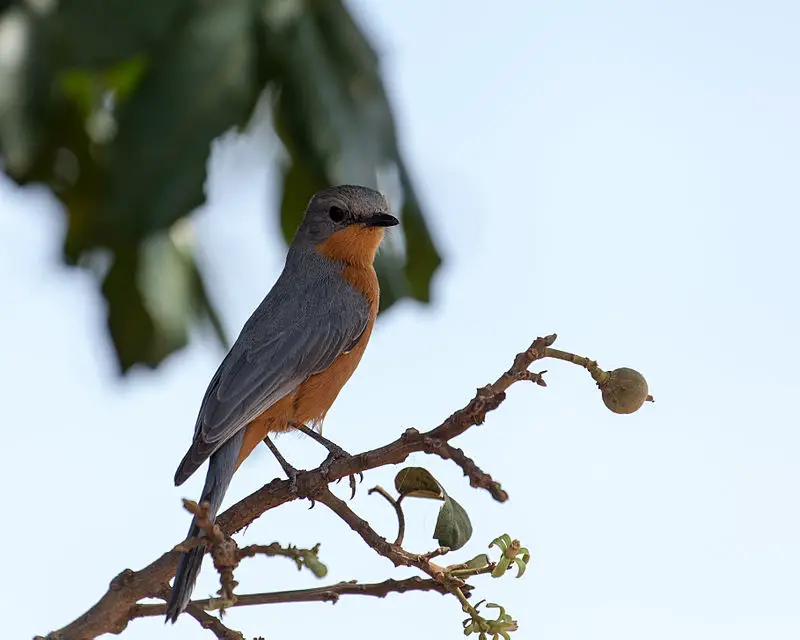
The Silverbird is a beautiful bird found throughout Eastern Africa. It is commonly found in open areas and is easily identifiable by its silver-grey feathers on its back and tawny-orange feathers on its underbelly.
Often mistaken as a juvenile due to their black-bordered tawny spots. It is the only member of its genus and is sometimes placed in the Melaenornis genus. The Silverbird is a flycatcher, and its diet consists mainly of insects.
They are known for their distinctive calls and can often be found singing from high perches.
Despite being a common sight in its native range, habitat loss and fragmentation pose a threat to this species conservation. Nevertheless, the Silverbird remains a fascinating and sought-after bird in the region.
Scientific classification:
| Kingdom | Animalia |
| Phylum | Chordata |
| Class | Aves |
| Order | Passeriformes |
| Family | Muscicapidae |
| Genus | Empidornis Reichenow, 1901 |
| Species | E. semipartitus |